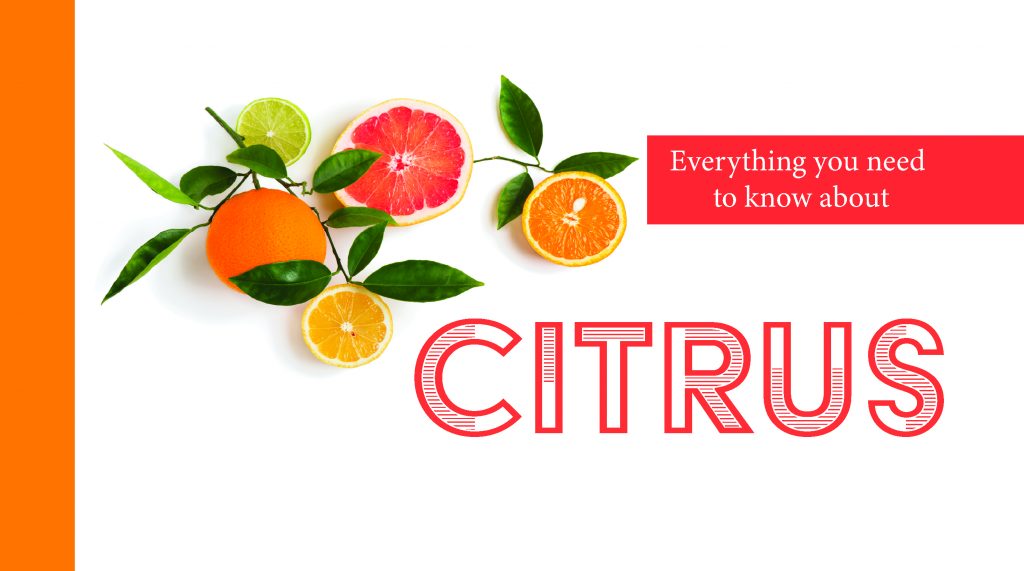Growing Citrus in RVA

In Richmond, VA citrus plants are grown indoors and are NOT cold hardy. Citrus in our area can be put outside during the summer months but should be brought in as soon as temperatures begin to drop in the evening. Citrus plants do well in containers, making them easier to bring in and out of the house – just be sure your pot has holes in the bottom for proper water drainage.
Citrus do best in a loamy/sandy soil – heavy soils with moisture control or that drain poorly can create a multitude of issues for citrus plants. We often suggest a cactus soil or an amended potting mixture to improve drainage. A major benefit to growing citrus plants is that they do not require much pruning. Keeping the deadwood or unsightly new shoots cut back is okay.

Citrus plants are heavy feeders – requiring a substantial amount of Nitrogen. We suggest using Espoma’s Citrus Tone to feed your lemons, limes, and other assorted citrus. Apply citrus tone according to the bag’s application rates instructions in late winter prior to fruiting, late spring right after bloom and again in the fall to support overall health.
Citrus needs significant heat to ripen fruit (between 70–90-degree Fahrenheit). Blooming and fruiting is dependent on both light and heat. If a citrus plant does not receive enough light/heat it will produce foliage but not flower/fruit. Place your citrus plant in an area that receives significant light (south-facing window is best). Avoid placing your plant too close to a window that would get cold in the winter months.
Citrus also needs a consistent watering schedule during the fruiting stage. Sudden changes in lighting or humidity can cause issues; Be sure to gradually change environmental conditions.
Why are my blooms or fruit dropping?
Young fruit may drop in May, June and/or July. Some fruit drop is natural. Excessive drop may be due to drought stress, low humidity, or nitrogen deficiency. Heavy pruning, thrips, mites, or spray injury can also cause fruit to drop. Fruit drop is a self-regulating response in citrus trees. Be sure to remove mature fruit; leaving mature fruit on the tree could cause more fruit drop or smaller fruit during the next crop.
Be aware that some varieties of citrus go through alternate bearing – they produce a lot of fruit one season and not the next. For example, Florida Valencia oranges and Karsh grapefruits typically present alternate bearing.

Most citrus trees grown indoors or outdoors are self-fruitful, including oranges, grapefruit, kumquats, lemons, and limes. However, some mandarin orange varieties produce more fruit with cross-pollination, but those fruits may have more seeds than those that self-pollinate. Plants that grow from seeds of cross-pollinated citrus might not bear fruit.
There are HUNDREDS of varieties of citrus. Below are a few that are most commonly mentioned/grown:
Varieties of Citrus:
Washington Navel Orange
Classic variety of an Orange & most popular backyard grown orange
Easy to grow – high yielding, seedless and early fruit
self-pollinating
Blood Oranges
distinct raspberry kind of flavor
usually tart-sweet to tart flavor
Types of blood oranges include Moro, Sanguinelli, and Tarocco
*Moro is the earliest ripening of the blood oranges and Tarocco is the sweetest of the blood oranges
Fun Fact: the blood orange contains special antioxidants (anthocyanins) that other citrus fruits do not possess causing the flesh to be a dark red.
Mandarin Orange
Sweet, less acidic, smaller than larger oranges
Kumquat
Similiar to a sweet orange but much smaller in size
More perishable than other citrus fruits
Cara Cara Orange
Sweet and seedless
Ripens in early winter
self-pollinating
Clementine
Often confused as a mandarin orange, it is a cross between a Mandarin orange and a sweet orange.
Usually, seedless
Tangerine
Variety of Mandarin
Much sweeter than a regular orange
Calamondin
Cross between a mandarin orange and a kumquat
very sour/tart taste – rarely consumed by itself
grows well in a container
Ruby Red Grapefruit
Almost seedless (as with other citrus you may find a seed here and there)
Sweet-tart taste with a thick peel
Fun fact: red grapefruits are more nutritious than white ones – Like all citrus, grapefruit has plenty of vitamin C but Ruby Reds are also high in lycopene, an antioxidant with the power to fight free radicals, which age our bodies. In fact, lycopene is what makes red grapefruit red. Ruby Reds are also much higher in vitamin A than white grapefruit.
Meyer Lemon
Cross between a lemon and a mandarin orange.
Easiest Lemon to grow, doesn’t require extreme amounts of heat to produce fruit compared to other citrus
Thin peel with less acidic taste than other lemons – slightly sweeter than Eureka lemons
Eureka Lemon
Large, Vigorous, thorn-less tree
Classic variety of lemon, quality fruit
Key Lime
Small fruit
more aromatic than Persian limes.
Thin skin/peel
Kaffir Lime
AKA Makrut lime
The leaves of this citrus plant are more often used than the fruit – Most frequently used in Thai and Indonesian dishes
Persian Lime
Hybrid between a Key Lime and a lemon
Seedless and larger fruit than a key lime
Most grocery store limes are either a Persian or Tahitian lime.
Ponderosa Lemon
Cross between a lemon and a citron
Very large, acidic fruit with a thick bumpy rind
Often grown as an ornamental tree and very thorny!
This covers most of what you need to know about growing citrus in the Richmond, VA area! If you have a citrus plant that is presenting issues, bring a leaf sample in or take pictures and we’re happy to help you diagnose what is going on.









